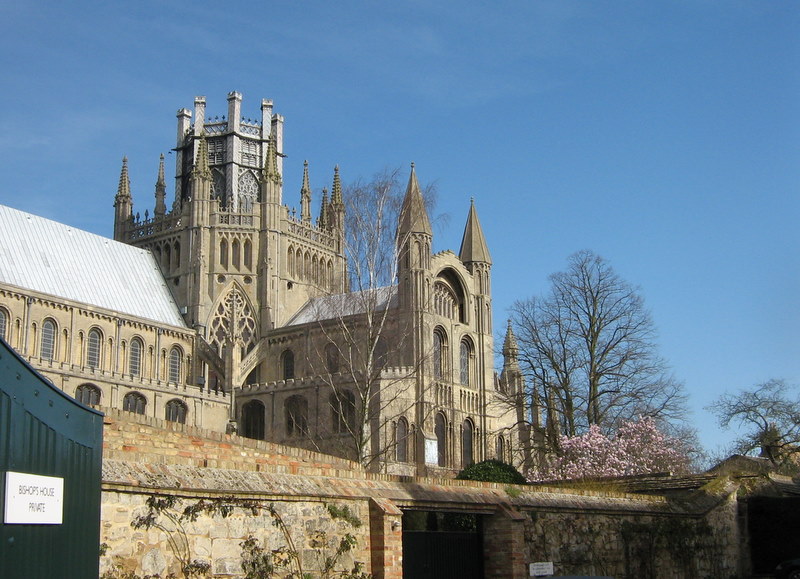Alan of Walsingham on:
[Wikipedia]
[Google]
[Amazon]
 Alan of Walsingham (died c. 1364), also known as Alan de Walsingham, was an English
Alan of Walsingham (died c. 1364), also known as Alan de Walsingham, was an English Ely Cathedral, Cambridgeshire
The Heritage Trail
UK. Instead of rebuilding the four piers, which carried the
File:Ely cathedral01.jpg, The Octagon
File:Oktogon Ely.JPG, Vaulting of Octagon
File:DSCF0435, UK, Ely, Cathedral, Octagon Tower from West Tower.jpg, The Lantern of the Octagon
File:Ely-020.jpg, Interior of the Lantern of the Octagon
File:DSCF0563, UK, Ely, Cathedral, Lady Chapel.jpg, St. Mary's Chapel (The Lady Chapel)
File:Ely Cathedral Lady Chapel ceiling.jpg, Vaulting, St. Mary's Chapel (The Lady Chapel)
 Alan of Walsingham (died c. 1364), also known as Alan de Walsingham, was an English
Alan of Walsingham (died c. 1364), also known as Alan de Walsingham, was an English architect
An architect is a person who plans, designs and oversees the construction of buildings. To practice architecture means to provide services in connection with the design of buildings and the space within the site surrounding the buildings that h ...
, first heard of in 1314 as a junior monk at Ely, distinguished by his skill in goldsmith
A goldsmith is a metalworker who specializes in working with gold and other precious metals. Nowadays they mainly specialize in jewelry-making but historically, goldsmiths have also made silverware, platters, goblets, decorative and servicea ...
's work, and for his acquaintance with the principles of mechanics.
He afterwards turned his attention to the study of architecture, and in 1321, when sub- prior of his convent, designed and began to build St Mary's Chapel (now Trinity Church), attached to the cathedral of Ely.
At the same time he was engaged in the erection of Prior Crauden's Chapel, the new sacristy, and many minor works. In December 1321, he was elected sacristan, with sole charge of the fabric of the cathedral.
Early on the morning of 13 February 1322, the great tower of the Ely Cathedral fell, and destroyed the choir and other attached portions of the structure.The Heritage Trail
UK. Instead of rebuilding the four piers, which carried the
Norman
Norman or Normans may refer to:
Ethnic and cultural identity
* The Normans, a people partly descended from Norse Vikings who settled in the territory of Normandy in France in the 10th and 11th centuries
** People or things connected with the Norm ...
(square) tower, a weak point in cathedral construction, Alan advanced the supports, to the extent of one bay, into each arm of the cross; and by so doing he not only distributed the weight upon eight piers instead of four, but obtained a magnificent central octagonal hall, which he roofed with a dome surmounted by a tall lantern.
The result was not only very beautiful, but also very original. It is almost certain that Alan never travelled beyond the limits of his convent, and that he was not acquainted, except perhaps from hearsay, with the domed Churches of the East, whose principles of construction, moreover, differ essentially from those employed by Alan.
His work remains to this day unique among the cathedrals of Europe
Europe is a large peninsula conventionally considered a continent in its own right because of its great physical size and the weight of its history and traditions. Europe is also considered a subcontinent of Eurasia and it is located entirel ...
. He subsequently rebuilt the bays of the choir, which had been ruined by the fall of the great tower, and these are admittedly amongst the most beautiful examples of Decorated, or Second Pointed, English Gothic architecture
English Gothic is an architectural style that flourished from the late 12th until the mid-17th century. The style was most prominently used in the construction of cathedrals and churches. Gothic architecture's defining features are pointed ar ...
.
In 1341, Alan of Walsingham was elected Prior of Ely, and in 1344 to the bishopric of Ely
The Diocese of Ely is a Church of England diocese in the Province of Canterbury. It is headed by the Bishop of Ely, who sits at Ely Cathedral in Ely. There is one suffragan (subordinate) bishop, the Bishop of Huntingdon. The diocese now co ...
, rendered vacant by the death of Simon de Montacute.
When he thus became bishop-elect, the works connected with the fabric of the cathedral had been conducted to a successful termination, leaving for his successor only the decorations and fittings.
His election, however, was set aside by the Pope in favour of Thomas L'Isle, a Dominican friar
A friar is a member of one of the mendicant orders founded in the twelfth or thirteenth century; the term distinguishes the mendicants' itinerant apostolic character, exercised broadly under the jurisdiction of a superior general, from the ...
, who was at Avignon with the Pope at the time. A similar honor was destined for Alan in 1361, but the choice of the convent was again overruled, and Simon Langham
Simon de Langham (1310 – 22 July 1376) was an English clergyman who was Archbishop of Canterbury and a cardinal.
Life
Langham was born at Langham in Rutland. The manor of Langham was a property of Westminster Abbey, and he had become a ...
, afterwards Archbishop of Canterbury and Cardinal, was consecrated Bishop of Ely in his stead. The possessions of the convent were said to have increased under his administration.
Gallery of Ely Cathedral
References
{{DEFAULTSORT:Alan Of Walsingham Year of birth unknown 1364 deaths 14th-century English architects English Christian monks English goldsmiths Gothic architects People from Ely, Cambridgeshire English stonemasons Architects from Cambridgeshire